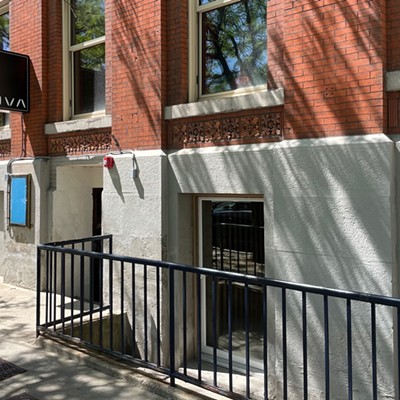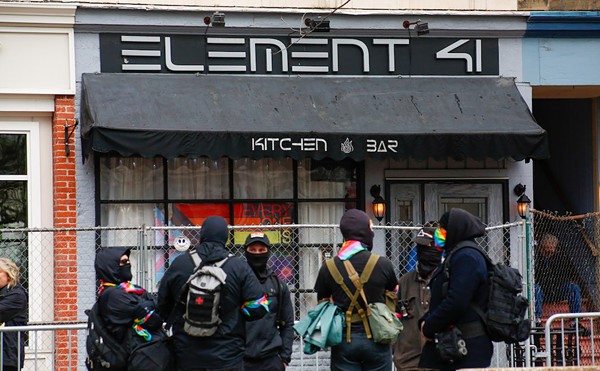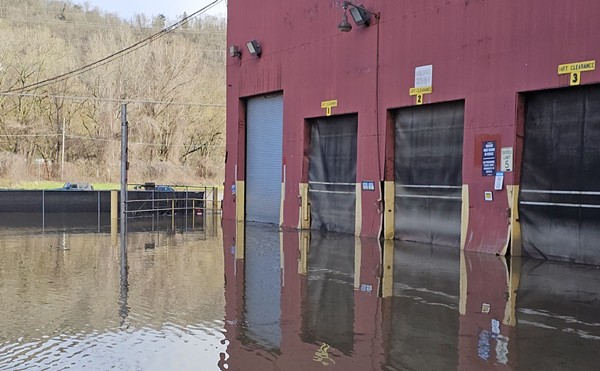If any building symbolizes the state of the Cleveland Metropolitan School District, it's Empire Elementary on Parmalee Avenue near East 93rd. From the outside, the building looks worn and weary. Boarded-up windows show that the school, constructed in 1915, has passed its prime. Inside, students' voices echo through the hallways.
Five years ago, 567 students filled its classrooms. Now, 279 students occupy a building meant to hold 650. During that same period, the district's enrollment dropped from roughly 62,500 to 47,600 students.
When it comes to academics, the school, like the district, is barely passing. For the past three years, Empire has been in Academic Watch — the equivalent of a D on its state report card. The Cleveland Metropolitan Schools have been failing since 2000, when the state began grading districts. The exception was 2006-07, when the school boasted Continuous Improvement, or a C. The grade fell the next year, however, and has never risen.
Cleveland Metropolitan School District's CEO, Eugene Sanders, looked at Empire's test scores, as well as its empty classrooms, and decided to administer last rites. Empire became one of 18 schools that will be shuttered if the school board approves Sanders' radical transformation plan.
The CEO has vowed to do "whatever it takes" to resurrect the district. His wide-ranging plan includes closing buildings altogether; converting others to charter schools; providing leadership and mentoring for schools heading in the right direction; and putting many on watch.
His goal is as ambitious as his actions. Within five years, no school should get less than Continuous Improvement on the state report card. Half of the district schools should be rated Effective — a B — or higher. If he's successful, Sanders will have changed a dropout into an honor student.
Empire, though, has come to the end of its road. Poor academic performance brought the school down. So did poverty, foreclosure and the rising popularity of charter schools. Empire's problems are the district's problems. That's why the school still has lessons to teach about the forces shaping the fortunes of the district and its 114 schools.
If test scores tell the story, then Empire's tale is one of ups and downs.
Last school year, 81 percent of fourth-graders demonstrated proficiency in reading. The number was well above the district's score of 54.4 percent, and just a point shy of the statewide average. Yet the same students stumbled in math. Only 23.8 percent showed proficiency, compared to 43 percent of their Cleveland peers and 78.4 percent of Ohio students.
The fifth-graders performed even worse: Only 29 percent demonstrated proficiency in reading, and only 12 percent did so in math. The district's percentages were 25 and 27 percent respectively. But the sixth-graders did better, with 69 percent showing proficiency in reading and 47 percent in math.
All in all, the school met only two of 19 indicators: fourth-grade reading and daily attendance. Only 36 percent of students tested well enough to be proficient or better in all subjects.
The primary reason for such dismal performance may be a factor beyond the school's control: money.
The relationship between family income and academic achievement is familiar enough to be a mantra: Students from high-income families perform better than students from low-income families. But researchers have found the concentration of poverty in the school matters as well. In other words, a low-income student will perform better if he or she goes to school where most students are better off. The inverse is also true: A middle-class student will fall behind in a school where most of the students are poor.
If that's the case, students in schools like Empire have been hit with a double whammy. The building sits in the 44108 zip code, where 27 percent of the families live in poverty, according to the last census. Along the streets surrounding the school — Parmalee, Empire and Columbia — about 20 percent of families are destitute. Those figures are almost surely higher today: 100 percent of Empire students are disadvantaged, according to the much more recent data used for the school's report card. It's a trait the school shares with the district as a whole.
Researchers like economists Lisa L. Mohanty and Lakshmi K. Raut believe the stability of a child's neighborhood can influence his/her academics. A key factor is homeownership, they say, because families who own property will stay put. Children who move frequently lose ground when they switch schools and rarely catch up.
But the neighborhood around Empire isn't stable; it's declining.
In 1990, 4,378 people lived in the census tract surrounding the school; 825 people owned homes there, and 700 rented. A decade later, the census counted 4,096 residents. The homeowners stuck it out, but only 587 renters stayed. More ominously, the number of vacancies jumped by 33 percent to 239.
Those census numbers don't reflect the foreclosure crisis that has afflicted the entire metropolitan area. Close to 600 homes in the 44108 zip code are in foreclosure, according to realtytrac.com, a website that tracks foreclosed properties around the nation. The Glenville Redevelopment Corp. estimates 1,200 homes and apartments are vacant.
The exodus helps explains Empire's empty classrooms. But numbers don't tell where students end up. If state trends are any indication, children are going to community schools, also known as charters.
The state Department of Education calls community schools "public schools of choice." Last school year, about 6,500 youngsters exercised their option to attend one of the county's 58 charter schools. They were among the 89,000 Ohio students who increased community school enrollments by 8 percent over the previous year. Statewide, enrollment in traditional schools decreased slightly, from 1.751 to 1.748 million students.
Community schools are public, nonprofit institutions operated by a state-approved sponsor instead of a traditional school district. The schools receive state and federal funds, and must meet state standards for testing and performance. When it comes to curriculum and programming, however, the charter schools have more flexibility than traditional public schools. For example, charters aren't hampered by municipal or neighborhood boundaries when it comes to recruiting and enrolling students.
The Department of Education allows two types of charters, or "community" schools. New start-ups are only allowed in "challenged districts." That designation covers schools in Ohio's eight large cities, and other districts in academic watch or academic emergency.
The second type are "conversion schools" — traditional public schools that are transformed to charters. The school district sponsors the schools, but they're run by outside educational management companies. If Sanders' plan goes forward, closed public schools may find new life if charter-school operators purchase of the buildings. But conversion is almost inevitable for schools that the CEO intends to "repurpose" by redesigning the curriculum and reassigning or replacing the staff.
The change will come in two stages. In September, "proven local charters" will be brought in to gradually assume control of the targeted schools. During the transfer, the district and the charter will coexist, according to information from the transformation plan.
In September 2011, however, the conversion will be immediate. On the first day of school, the principal employed by a local (or national) educational management company could be greeting parents and students.
If test scores improve, parents probably won't care who runs the schools. But the results of Renaissance 2010, Chicago's school reform effort, suggest that charters aren't the cure-all they're widely believed to be.
RELATED: An interview with CMSD chief academic officer Eric Gordon.












